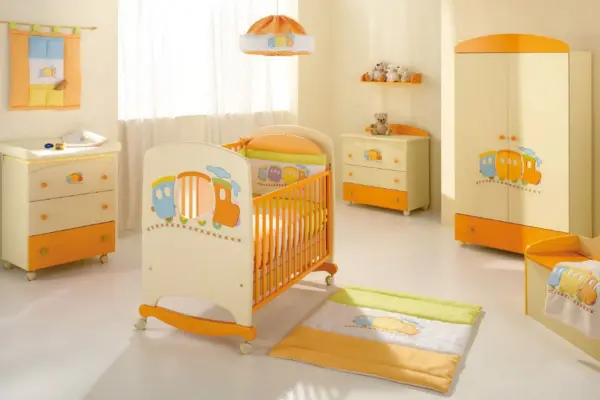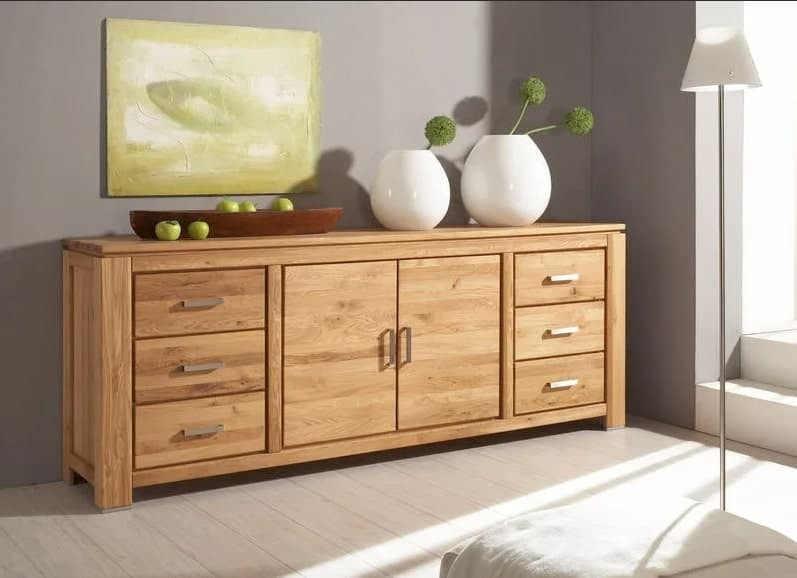Choosing between furniture made of laminated particle board (LDPB) or solid wood is a key question when designing an interior. According to Grand View Research, the global furniture market is valued at $731 billion, with composite materials (including LDPB) accounting for about 60% due to affordability, while solid wood holds roughly 20% in the premium segment. In practice, I often notice that clients spend months choosing a material, although the cost of LDPB furniture starts at $50 per square meter, whereas solid wood furniture ranges from $200 to $1,000 depending on the wood species.
Which is better: LDPB or solid wood furniture? This question concerns every buyer. In practice, I often observe that clients overestimate the importance of the material while overlooking functionality. Just as grape varieties affect the taste of wine, the furniture material defines its character and durability.
Laminated particle board is a composite material made from wood shavings. The raw material is bonded with synthetic resins under high pressure. The surface is coated with a decorative film that mimics various textures—from classic oak to exotic zebrawood.
Solid wood furniture is made from whole or glued boards. There are solid and glued wood types—the latter is 30-40% cheaper. Thus, the choice between wood types impacts the project’s final cost.
It’s worth noting that modern technology allows LDPB to mimic the texture of solid wood so accurately that even experts struggle to distinguish them visually.
Comparing LDPB and Solid Wood: Which to Choose
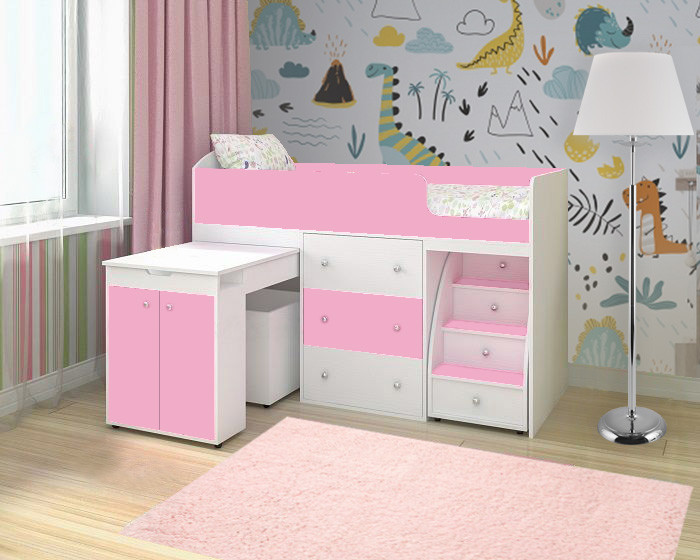 When choosing furniture materials, it’s crucial to understand the differences between LDPB and solid wood. Whether LDPB or solid wood furniture is better depends on specific needs.
When choosing furniture materials, it’s crucial to understand the differences between LDPB and solid wood. Whether LDPB or solid wood furniture is better depends on specific needs.
| Criterion | LDPB | Solid Wood |
|---|---|---|
| Cost per m² (average) | $50-150 | $200-1000 |
| Service Life | 10-15 years | 25-50 years |
| Density kg/m³ | 650-750 | 400-800 (depends on species) |
| Moisture Resistance | Limited (if edge is damaged) | High (with hydrophobic treatments) |
| Repairability | Low (element replacement) | High (sanding, recoating) |
| Sound Insulation Rw, dB | 25-30 (18mm thickness) | 30-40 (20mm thickness) |
| Fire Safety | G3-G4 (normally flammable) | G3-G4 (depends on treatment) |
| Eco-Friendliness | Class E1/E0 (≤0.1 ppm formaldehyde) | 100% natural (possible allergenicity from coniferous woods) |
These data highlight the clear advantages of each material under specific conditions.
Production Technologies and Impact on Quality
Understanding the manufacturing process helps assess material quality. LDPB is produced by pressing wood shavings with urea-formaldehyde or melamine resins at 160-180°C and 25-40 atm pressure. In my work with private clients, I notice many fear "chemicals," though modern technologies ensure safety when standards are met. The surface is coated with a melamine film under pressure in a multi-layer process.
Quality depends on board density. A density of 650-750 kg/m³ is optimal for furniture-grade LDPB, while lower values of 550-650 kg/m³ are used in construction. Solid wood is mechanically processed: dried to 6-8% moisture (10% max for indoor use), planed, and sanded—requiring strict adherence to processes to prevent deformation.
Solid wood is 40-60% more expensive than glued wood but offers higher strength and prestige. Modern coatings include natural oils (linseed, tung), beeswax, and polyurethane varnishes with gloss levels from matte 5-10% to high-gloss 80-90%.
Advantages and Disadvantages of LDPB: Pros and Cons
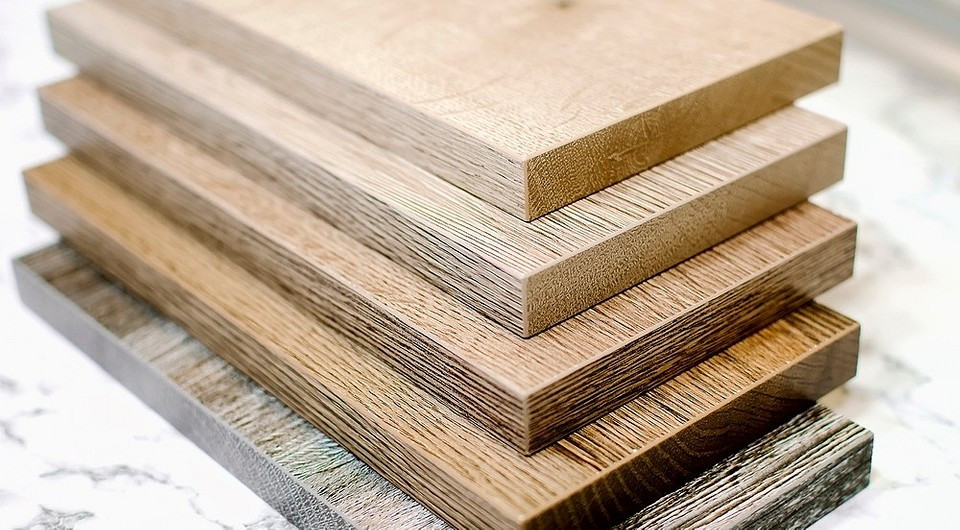 When choosing LDPB furniture, it’s important to understand its key characteristics. LDPB furniture is strong enough for most household tasks—it doesn’t crack or warp like solid wood under humidity changes.
When choosing LDPB furniture, it’s important to understand its key characteristics. LDPB furniture is strong enough for most household tasks—it doesn’t crack or warp like solid wood under humidity changes.
Advantages of LDPB include:
- Affordable price—3-5 times cheaper than solid wood
- Wide range of decors—over 200 texture and color options
- Size stability under temperature fluctuations
- Ease of processing and assembly for furniture makers
These advantages make LDPB popular for cabinet furniture, especially in budget solutions.
However, the material has limitations. The disadvantages of LDPB must be considered:
Main disadvantages of LDPB:
- Formaldehyde content (per EN 717-1: class E1 ≤ 0.1 ppm, E0 ≤ 0.05 ppm)
- Moisture damage if PVC edge is compromised
- Limited repairability—only element replacement
- Less prestigious appearance compared to natural wood
- Recycling challenges due to synthetic components
Understanding these limitations helps make an informed decision. The drawbacks aren’t always critical—it depends on usage conditions.
In a recent project, a client replaced an LDPB kitchen after 12 years not due to wear but to update the design—functionality remained intact.
Pros and Cons of Solid Wood Furniture
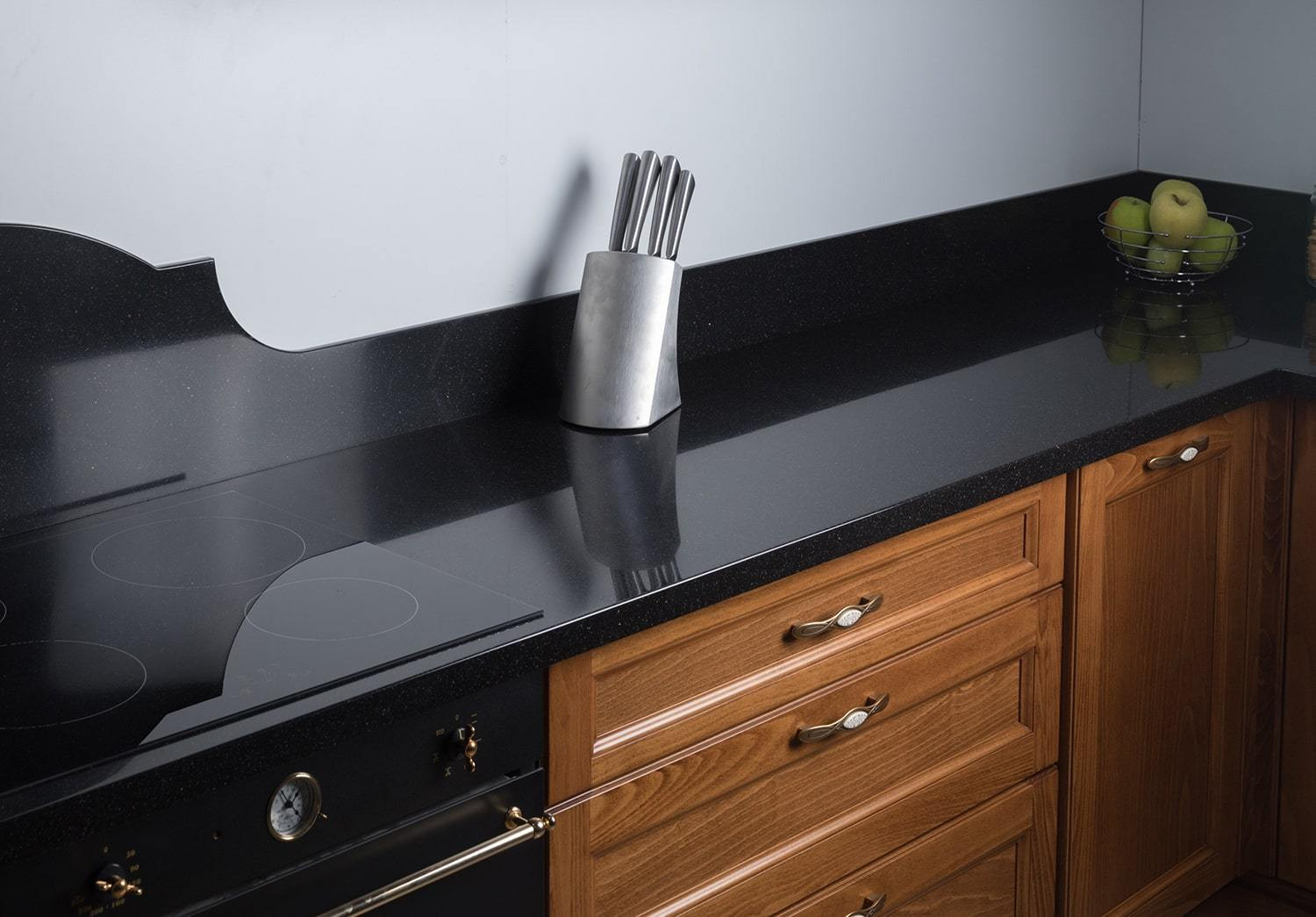 High-quality solid wood furniture is a long-term investment. But is it suitable for everyone? Let’s explore the main characteristics of natural wood—a material used for millennia.
High-quality solid wood furniture is a long-term investment. But is it suitable for everyone? Let’s explore the main characteristics of natural wood—a material used for millennia.
Pros of solid wood furniture:
- Eco-friendly furniture without synthetic additives
- Unique texture for each piece—nature never repeats
- Repairability and coating renewal
- Increasing value over time as an antique
These advantages explain solid wood’s popularity in the premium segment. Classic interiors lose authenticity without it.
However, natural wood requires special care. The cons of solid wood furniture can be critical:
Main cons of solid wood furniture:
- High cost—from $200 per m² vs. $50 for LDPB (2-10 times difference depending on species)
- Demands specific conditions (45-55% humidity, 18-24°C temperature)
- Risk of cracking or deformation if microclimate is disrupted
- Difficulty matching color and texture for additional elements
- Need for periodic protective coating renewal (every 3-5 years)
- Heavier structures—increased load on supporting elements
These cons aren’t critical with proper care. Understanding limitations helps assess solid wood’s suitability for specific conditions.
LDPB or Solid Wood for the Kitchen: Which Material is Better
.jpg) Choosing a kitchen material requires special attention. LDPB or solid wood for the kitchen is a dilemma faced by every second buyer. Moisture resistance and practicality are top priorities.
Choosing a kitchen material requires special attention. LDPB or solid wood for the kitchen is a dilemma faced by every second buyer. Moisture resistance and practicality are top priorities.
Solid wood performs better for kitchen facades, but LDPB carcasses are just as reliable. In a recent project, a client saved $2,000 by using a combined approach—LDPB carcass with oak facades.
The combined approach is optimal for most budgets. It’s not always “all or nothing.”
Considering the structural features of kitchen furniture, 70% of manufacturers use LDPB for carcasses and solid wood for facades—reducing costs by 40% without losing functionality.
Which Furniture Lasts Longer: LDPB or Solid Wood
Manufacturer statistics provide interesting insights. LDPB cabinet furniture lasts 10-15 years with proper use—sufficient for most users. Solid wood can last 25-50 years but requires maintenance every 3-5 years.
Durability isn’t always critical. Many replace furniture for design reasons before physical wear. Given modern apartment features, furniture is often updated during moves.
Care and Maintenance Rules
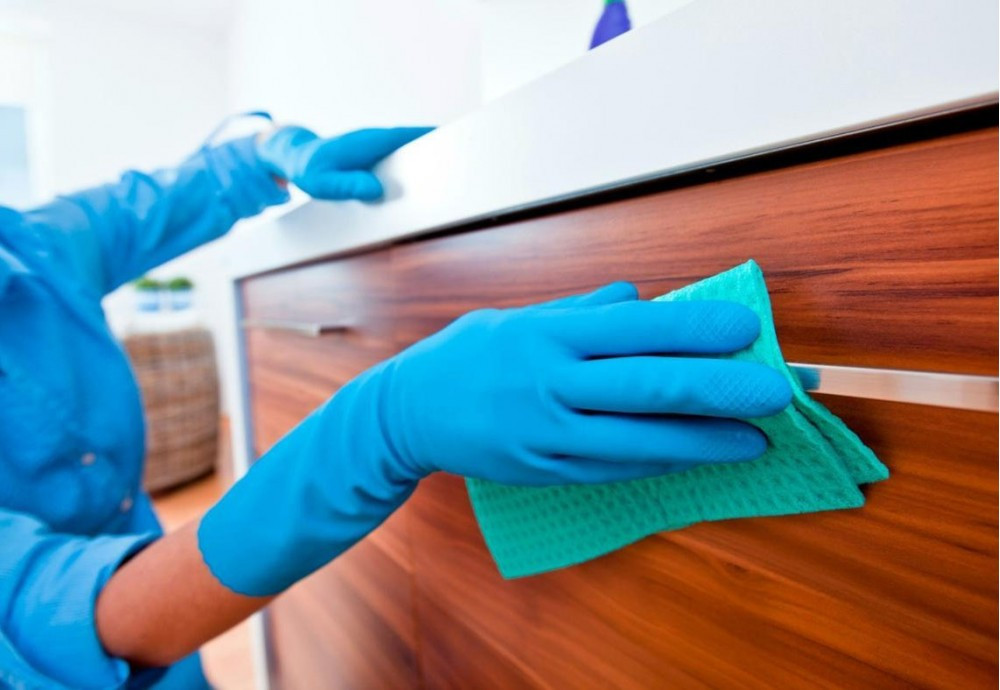 Proper care significantly extends furniture lifespan. Most damage occurs due to improper use, not material wear.
Proper care significantly extends furniture lifespan. Most damage occurs due to improper use, not material wear.
LDPB furniture care:
- Wipe with a damp microfiber cloth without abrasive cleaners
- Avoid direct water exposure on edge bands
- Maintain 40-65% air humidity to prevent delamination
- Protect from direct sunlight (UV degrades melamine coating)
- Use coasters for hot items (temperatures above 70°C can damage coating)
Moisture-resistant LDPB has paraffin impregnation and a 2mm-thick PVC edge with a 0.8-1.5mm radius, acting as protective armor for vulnerable edges. In my work with clients, I notice that edge banding quality determines lifespan in high-humidity conditions.
Solid wood furniture care:
- Regularly treat with special oils or hard wax (every 6-12 months)
- Monitor air humidity at 45-55% (use a hygrometer)
- Remove scratches with fine sanding (P220-P320 grit) and recoating
- Avoid temperature fluctuations exceeding 5°C per hour
- Allow new furniture to acclimate for 7-14 days
These simple rules help maintain furniture’s original appearance for years.
Eco-Friendliness and Material Safety
Modern standards make LDPB furniture safe for use in children’s rooms.
Current furniture design trends emphasize practicality alongside aesthetics. The E1 emission class per EN 717-1 limits formaldehyde emissions to 0.124 mg/m³ of air. E0 is stricter at 0.05 mg/m³. Solid wood furniture is fully natural, but coniferous woods may cause allergies in sensitive individuals due to essential oils and resins.
Certified E0 LDPB matches solid wood in eco-friendliness, surpassing it in size stability and crack resistance. EPA formaldehyde standards set strict requirements for composite materials.
Real Success Story
“After my child was born, I chose between solid wood and LDPB for the nursery. I went with ‘Oxford Cherry’ LDPB—saved $800, and the quality exceeded expectations. Five years later, the furniture looks new, and my wife loves its functionality. Now I recommend focusing on practicality over brand names.” — Mikhail, father of two
How to Distinguish LDPB from Solid Wood When Buying Furniture
Smart furniture selection requires attention to detail. Choosing between LDPB or solid wood furniture depends on verifying key characteristics and understanding material differences.
When buying LDPB, check:
- E1 or E0 certification per EN 717-1 (or CARB Phase 2 for U.S. imports)
- Edge quality—must fit tightly without gaps or swelling
- No chips, scratches, or swelling on the surface
- Uniform color and clear decor texture
- Board thickness: ideally 16-18mm for carcasses, 25-32mm for countertops
- Material density: should be 650-750 kg/m³ (specified in product documentation)
When buying solid wood, check:
- Wood species and its suitability for the furniture’s purpose
- No cracks, deep knots, or resin pockets
- Quality of finish coating—uniform application, no drips
- Wood moisture 6-8% (10% max)—verified with a moisture meter
- Uniform surface treatment—no tool marks
- FSC or PEFC certification for eco-responsible production
- Correct grain direction in glued elements
Always demand a manufacturer’s warranty: at least 1 year for LDPB, 2-3 years for solid wood—standard for reputable makers. For premium oak or ash furniture, warranties can extend to 5-10 years with proper use.
Furniture Assembly and Fastening: Technical Features
 Proper fastening ensures furniture longevity. LDPB requires pre-drilling holes 1-2mm smaller than screws to prevent delamination. Optimal distance from the edge is at least 8mm, from corners—16mm.
Proper fastening ensures furniture longevity. LDPB requires pre-drilling holes 1-2mm smaller than screws to prevent delamination. Optimal distance from the edge is at least 8mm, from corners—16mm.
For solid wood, use wooden dowels, confirmats, or screws with pre-drilling. Grain direction matters—cross-grain fastening reduces connection strength by 30-40%.
Practical Selection Tips
When choosing furniture for different rooms, consider each space’s specific requirements.
- For nurseries, choose E0 LDPB or pine solid wood
- For kitchens, combined solutions are optimal
- For living rooms, solid wood creates a prestigious interior
- For bedrooms, both materials work with proper care
These recommendations help identify the best material for each case.
In my work with clients, I notice 80% overestimate the importance of the carcass material and underestimate hardware quality, which impacts lifespan more.
LDPB or Solid Wood Furniture: Conclusions and Expert Recommendations
Choosing between LDPB or solid wood furniture depends on your priorities and resources.
Choose LDPB if: affordability matters, you plan to refresh the interior in 5-10 years, or need furniture for rental spaces or nurseries (which children outgrow quickly).
Choose solid wood if: you’re creating a timeless interior, value prestige and status, and are ready to invest long-term with proper care.
Main rule: assembly and hardware quality affect lifespan more than the material itself. Well-made LDPB furniture outlasts poorly crafted solid wood.
Choosing between LDPB or solid wood furniture requires balancing budget, functionality, and aesthetics. Both materials have advantages and are successfully used in modern interiors. Remember: quality furniture isn’t just about the material but also thoughtful design, professional assembly meeting technical standards, and proper care during use.
